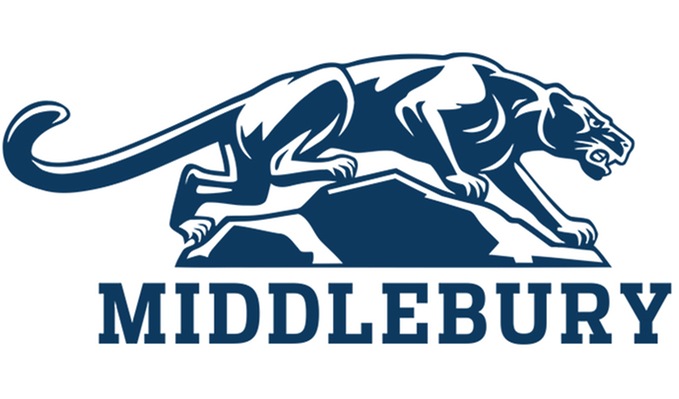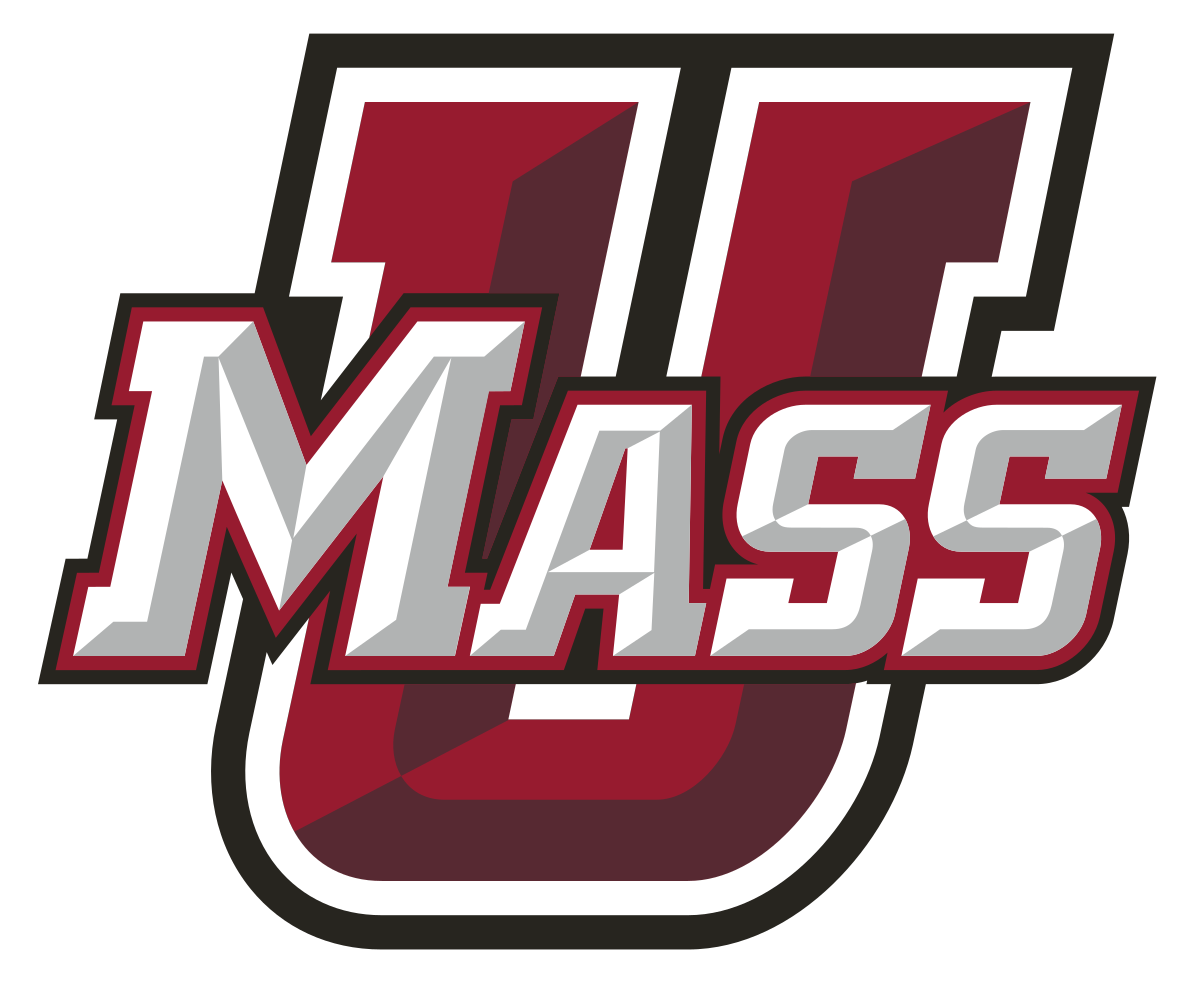BRIDGEPORT, Pa. — The Collegiate Water Polo Association (CWPA) Men’s Collegiate Club Division Spotlight series focuses on the newest grouping in the league – the Colonial Division of Amherst College, Middlebury College, the United States Coast Guard Academy “A”, the United States Coast Guard Academy “B”, the University of Massachusetts (UMass), Wesleyan University, Williams College and Worcester Polytechnic Institute (WPI).
HISTORY: Formed prior to the 2015 season from the New England Division and North Atlantic Divisions, the Colonial Division was the first men’s championship qualifying division created in the CWPA since the Sierra Pacific Division in 2011. The Mid-Atlantic “B” Division was also created in 2015, the “B” Division Champion qualifies – if the team elects to compete – at the Mid-Atlantic Division Championship for a shot at making the Men’s National Collegiate Club Championship. Comparatively, the champion of the Colonial Division is unique as the team attends the Division III National Collegiate Club Championship.
The Colonial Division is one of three divisions (Colonial, Heartland, North Atlantic) that qualifies exclusively for the Division III Collegiate Club Championship and does not possess a path via an automatic bid to the Men’s National Collegiate Club Championship. For the majority of the teams (Amherst, Middlebury, Coast Guard “A”, Coast Guard “B”, Wesleyan, Williams, WPI) this is fitting as the septet identify as National Collegiate Athletic Association (NCAA) Division III institutions. The exception is UMass which is a Division I program and therefore does not have an opportunity to compete at either the Division III or National Collegiate Club Championships.
The history of the division is brief, but notable for its competitive equity, as four teams have combined to claim the five Colonial Division Championships since the inaugural event in 2015.
Coast Guard holds the most crowns with a pair as the Bears captured the 208 and 2019 titles, while placing second in 2015 and 2017. Williams commenced the division’s history by taking the 2015 crown with a runner-up mark in 2016. Amherst reached the title game in 2017 and 2018 with a championship in its first appearance, while UMass notched a runner-up spot in 2019.
On the Division III National Championship state, Middlebury holds a pair of title game appearances as the Panthers claimed the 2003 National Championship while a member of the North Atlantic Division by downing Wesleyan – which was part of the New England Division – by a 15-7 score at Bowdoin College in Brunswick, Maine. Middlebury returned to the title game in 2015 while still part of the New England Division during the inaugural season of Colonial Division competition, but fell to Washington University in St. Louis via a 14-9 tally at Macalester College in St. Paul, Minn.
Colonial Division Champion/Runner-Up
- 2015 – Williams College / United States Coast Guard Academy
- 2016 – Wesleyan University / Williams College
- 2017 – Amherst College / United State Coast Guard Academy
- 2018 – United States Coast Guard Academy / Amherst College
- 2019 – United States Coast Guard Academy / University of Massachusetts
Division III National Collegiate Club Champion/Runner-Up
- 2003 – Middlebury College / Wesleyan University
- 2015 – Washington University in St. Louis / Middlebury College
THE TEAMS: The Colonial Division spans three states with programs in Connecticut (Coast Guard “A”, Coast Guard “B”, Wesleyan), Massachusetts (Amherst, UMass, Williams, WPI) and Vermont (Middlebury)
 Amherst College
Amherst College
The 2017 Colonial Division Champion and 2018 runner-up, the co-ed Yo-Ho Penguins of Amherst College previously achieved seven championship appearances while a member of the North Atlantic and New England Divisions.
The 1995 New England Division runner-up, Amherst moved over to the North Atlantic Division and picked up a pair of championships (2011, 2012, 2014) and three second place marks (2007, 2010, 2013) prior to joining the Colonial Division in 2015.
A private liberal arts college in Amherst, Massachusetts, the school was founded in 1821 as an attempt to relocate Williams College by its then-president Zephaniah Swift Moore. The third oldest institution of higher education in Massachusetts, the institution was named after the town, which in turn had been named after Jeffery, Lord Amherst, Commander-in-Chief of British forces of North America during the French and Indian War. Originally established as a men’s college, Amherst became coeducational in 1975.
Amherst is an exclusively undergraduate four-year institution; the school enrolled 1,855 students in fall 2018. Students choose courses from 38 major programs in an open curriculum and are not required to study a core curriculum or fulfill any distribution requirements; students may also design their own interdisciplinary major. For the class of 2023, Amherst received 10,567 applications and accepted 1,144, yielding a 10.8% acceptance rate.
Amherst was ranked as the best liberal arts college in the country for 2018–19 by The Wall Street Journal, the second best liberal arts college in the country by U.S. News & World Report and 16th out of all U.S. colleges and universities by Forbes in their 2018 rankings.
Amherst has historically had close relationships and rivalries with Williams College and Wesleyan University, which form the Little Three colleges. The college is a member of the Five College Consortium, which allows its students to attend classes at four other Pioneer Valley institutions: Mount Holyoke College, Smith College, Hampshire College and the University of Massachusetts Amherst. In addition to the 850 courses available on campus, Amherst students have an additional 5,300 classes to consider through the Consortium (without paying additional tuition) and access to eight million library volumes. The Five Colleges are geographically close to one another and are linked by buses that run between the campuses.
In July 2007, Amherst announced that grants would replace loans in all financial aid packages beginning in the 2008-09 academic year. Amherst had already been the first school to eliminate loans for low-income students, and with this announcement it joined Princeton University, Cornell University and Davidson College, then the only colleges to completely eliminate loans from need-based financial aid packages. Increased rates of admission of highly qualified lower income students has resulted in greater equality of opportunity at Amherst than is usual at elite American colleges. In the 2008-2009 academic year, Amherst College also extended its need-blind admission policy to international applicants.
For more information on the Amherst co-ed collegiate club team, contact either Flanagan Waldherr (fwaldherr21@amherst.edu), Julia Merrill (jmerrill22@amherst.edu) or head coach Chris van den Berg (cvandenberg@amherst.edu).
- Facebook (@amherstcollegewaterpolo)
Middlebury College 
Led by head coach Brian Goodwin, Middlebury College holds a unique position in the Colonial Division as the Panthers have not claimed the division title, but hold a pair of Division III Collegiate Club Championship title game appearances with a victory.
The 2015 Men’s Division III Club Championship runner-up via a 14-9 loss to Washington University in St. Louis, the Panthers made the field as a selection from the New England Division. Middlebury, which placed fifth at the New England Division Championship, made the Division III Championship field as the Panthers were the highest finishing Division III program behind Division I teams Dartmouth College, Boston College, Boston University and Yale University.
It marked Middlebury’s second Division III Club Championship as the Panthers, which were representing the North Atlantic Division, topped Wesleyan University of the New England Division by a 15-7 score in 2003 to claim the Division III National Championship.
Middlebury, which joined the Colonial Division prior to the 2018 season, is undefeated in division title games with North Atlantic Division wins in 2004 and 2005 against Dartmouth prior to taking the 2007 New England Division championship versus Boston College.
A private liberal arts college in Middlebury, Vermont, the school was founded in 1800. The college currently enrolls 2,526 undergraduates from all 50 states and 74 countries and offers 44 majors in the arts, humanities, literature, foreign languages, social sciences and natural sciences.
The college holds several distinctions – including being the first American institution of higher education to have granted a bachelor’s degree to an African-American, graduating Alexander Twilight in the class of 1823. Middlebury was also one of the first formerly all-male liberal arts colleges in New England to become a coeducational institution, following the trustees’ decision in 1883 to accept women. In 1886, May Belle Chellis was the first woman to graduate, and she was the valedictorian (although she was not allowed to address the graduating class because she was a woman). The school is also the birthplace of the National Christmas Tree as then Middlebury President Paul Dwight Moody commenced the American tradition in 1923 when the College donated a 48-foot balsam fir for use at the White House. The tree was illuminated when Vermont native Calvin Coolidge flipped an electric switch in the first year of his presidency.
The most popular majors at Middlebury by number of recent graduates are: economics, international studies, English and American literatures, political science, psychology, and environmental studies. Close to 40 percent of graduating seniors choose a single major in a traditional academic discipline, and about 30 percent of students complete a double or joint major combining two disciplines. Another 30 percent of students major in one of the College’s interdisciplinary programs.
The academic year follows a 4–1–4 schedule of two four-course semesters in the autumn and spring plus a what is known as a “Winter Term” session in January. The Winter Term, often called “J-Term” for January Term, allows students to enroll in one intensive course, pursue independent research, or complete an off-campus internship. Winter Term courses are taught by a mix of traditional faculty and special instructors.
Middlebury is renowned for the Bread Loaf School of English based at the college’s Bread Loaf Mountain campus in Ripton, just outside Middlebury, in sight of the main ridge of the Green Mountains. The poet Robert Frost is credited as a major influence on the school and returned to the School every summer from 1921 on with but three exceptions for 42 years. Every summer since 1920, Bread Loaf has offered students from around the United States and the world intensive courses in literature, creative writing, the teaching of writing and theater. In addition to the six-week summer program, Middlebury College’s Bread Loaf campus is also the site of the Bread Loaf Writers’ Conference for established authors, founded in 1926. It was called by The New Yorker “the oldest and most prestigious writers’ conference in the country.”
For the class of 2023, the college offered admission to 1,547 students out of an applicant pool of 9,750, yielding an overall acceptance of 15.9%.
Middlebury enrolls around 600 students to begin in the fall semester and an additional 100 to begin in the spring. Those accepted for the fall admissions program begin the academic year in September and are referred to as “Regs.” Those accepted for the spring admissions program begin the academic year in February and are referred to as “Febs.” Students accepted to the Feb program use the fall semester to travel, volunteer, enroll at other universities or work. Febs graduate in the annual mid-year commencement at the Middlebury College Snow Bowl
For more information on the Middlebury men’s collegiate club team, contact head coach Brian Goodwin (goodwinjsd@gmail.com).
- Twitter (@MiddPolo)
 United States Coast Guard Academy
United States Coast Guard Academy
A two-time defending Colonial Division Champion, the Bears of the United States Coast Guard Academy fielded both “A”and “B” teams during the 2019 season.
Coast Guard, which claimed the 2018 and 2019 division titles after taking second place in 2015 and 2017, previously won (2008) and second as the runner-up (2009, 2012) in the North Atlantic Division prior to the creation of the Colonial Division.
The service academy of the United States Coast Guard in New London, Connecticut, Coast Guard was founded in 1876 and is the smallest of the five U.S. service academies. Charged with providing education to future Coast Guard officers in one of nine major fields of study, the Coast Guard Academy does not require a congressional nomination for admission unlike the other service academies.
Students are officers-in-training and are referred to as cadets, and upon graduation receive a Bachelor of Science degree and are commissioned as Coast Guard ensigns with a five-year active-duty service obligation, with additional years if the graduate attends flight school or subsequent government-funded graduate school. Out of approximately 250 cadets entering the academy each summer, around 200 graduate. Cadets can choose from among nine majors, with a curriculum that is graded according their performance in a holistic program of academics, physical fitness, character, and leadership.
Cadets are required to adhere to the academy’s “Honor Concept,” “Who lives here reveres honor, honors duty,” which is emblazoned in the halls of the academy’s entrance. The academy’s motto is Scientiæ cedit mare, which is Latin for “the sea yields to knowledge”.
Each year more than 2,000 students apply and appointments are offered until the number accepting appointments to the incoming class numbers reaches approximately 400; the average entering class size is 300 cadets. Those who have received appointments as cadets report to the USCGA in late June or early July for “Swab Summer”, a basic military training program designed to prepare them for the rigors of their Fourth Class year. After four years of study and training, approximately 200 of those cadets will graduate. About 35 percent of cadets are women.
All graduating cadets earn commissions as ensigns in the United States Coast Guard, as well as Bachelor of Science degrees. For that reason the academy maintains a core curriculum of science and professional development courses in addition to major-specific courses. Each cadet takes two semesters of classes during the school year and then spends the majority of the summer in military training to produce officers of character with the requisite professional skills. Among these are courses in leadership, ethics, organizational behavior, and nautical science. The majority of cadets report to their first units after graduating, which are either afloat units, shore units or basic flight training as student naval aviators, with the training conducted under the auspices of the United State Navy. Those that are assigned afloat serve as either deck watch officers or student engineers. Professional maritime studies courses help prepare cadets in piloting, voyage planning, deck seamanship and all aspects of ship-handling, as well as Coast Guard leadership and administrative duties.
Academics at the USCGA stress the sciences and engineering, but different courses of study are available. In addition, several of the majors offer tracks of specialization (for example, Marine and Environmental Science majors can choose to focus on biology, chemistry, or geophysics). Cadets sometimes opt to take elective courses with Connecticut College (adjacent the academy’s campus) as part of an open exchange agreement.
For more information on the Coast Guard men’s collegiate club team, contact either head coach Kent Hunt (kent.a.hunt@uscga.edu) or Miguel Hernandez (miguel.a.hernandez@uscga.edu).
- Facebook (@GOCOGOWOPO)
- Website (www.uscgasports.com/information/clubsports)
University of Massachusetts -Amherst
-Amherst
The only non-Division III institution in the Colonial Division and therefore ineligible for the division’s automatic bid to the Men’s Division III Collegiate Club Championship, the University of Massachusetts fields a co-ed team during the Fall.
The 2019 Colonial Division runner-up, the Minutemen have a storied history in the sport of water polo as the school fielded varsity men’s and women’s programs until 2002. The school’s varsity men’s team captured the Collegiate Water Polo Association (CWPA) Championship seven times (1993, 1994, 1995, 1996, 1998, 1999, 2001) during its tenure.
Founded in 1863 and located in Amherst, Massachusetts, Massachusetts offers a variety of academic and co-curricular options. The campus has 21,969 undergraduates and offers 109 bachelor’s degree programs. There is a student-to-faculty ratio of 18:1 and 81% of classes have fewer than 40 students.
Massachusetts is also part of the Five Colleges consortium, with Smith, Mount Holyoke, Hampshire, and Amherst colleges, all within a free bus ride of each other using the Pioneer Valley Transit Authority. Students can take classes on any of these campuses and participate in all co-curricular and cultural activities.
For more information on the UMass co-ed collegiate club team, contact Jacob Cowley (waterpolo@umass.edu).
- Facebook (@UMassClubWaterPolo)
- Twitter (@UMass_WaterPolo)
- Website (umassamherst.campuslabs.com/engage/organization/waterpoloclub)
 Wesleyan University
Wesleyan University
The 2003 Men’s Division III Collegiate Club Championship runner-up, Wesleyan University is a private university in Middletown, Connecticut. Founded in 1831 as a men’s college the school was the first institution of higher education to be named after John Wesley, the founder of Methodism. The college became fully co-educational in 1970 after accepting female applicants from 1872 to 1909; the college’s reversal on accepting women led to the establishment of Connecticut College in 1912. With Amherst College and Williams Colleges, Wesleyan is one of “the Little Three” liberal arts colleges.
Wesleyan has produced distinguished alumni in the arts and sciences, literature, politics and government, business, journalism, and academia. Its alumni include 13 Pulitzer Prize winners such as playwright and Hamilton creator Lin-Manuel Miranda, 14 Rhodes scholars, three Truman scholars, three Guggenheim fellows, seven MacArthur fellows, and 156 Fulbright scholars. Additionally, four Nobel laureates have been associated with the university. Other prominent alumni include 34 members of the United States Congress, 16 presidential cabinet members, 11 governors, six directors and heads of U.S. federal agencies, several CEOs and founders of Fortune 500 companies, and two attorneys general of the United States.
Wesleyan’s 46 undergraduate academic departments offer over 900 courses each semester and more than 900 individual tutorials. Wesleyan also offers 13 interdisciplinary programs and nine Academic Centers. Undergraduates receive the Bachelor of Arts in one (or more) of 45 major concentrations. As many as a third of these majors are interdisciplinary in structure. Wesleyan began offering minors in February 2012 and at present offers eleven minors; more minors are under consideration. Certificates are offered in eleven fields. According to the university, “Certificate programs at Wesleyan supplement (but do not replace) a major. A certificate requires an interdisciplinary set of courses that prepares a student for postgraduate work in a specified interdisciplinary field.” In addition, double majors are popular and up to 40% of Wesleyan’s graduates are double majors. Students may triple major as well. Undergraduates can also pursue a custom-designed major, known as a University Major.
Wesleyan offers 3–2 programs in engineering with the California Institute of Technology and Columbia University’s School of Engineering. These programs allow undergraduates to receive degrees in five years from both Wesleyan (B.A.) and the Caltech or Columbia (B.Sc., Engineering). Additionally, Wesleyan offers a BA/MA Program in the sciences leading to a bachelor’s degree in the fourth year and a master’s degree in the fifth year. Tuition for the fifth year of the master’s degree is waived. Undergraduates can pursue studies in pre-medicine, pre-law, and pre-business through any major. Most classes at Wesleyan are small; the predominant class size for undergraduates is 10–19 students, and the student to faculty ratio is 8 to 1.
For the Class of 2023 (enrolling Fall 2019), Wesleyan received 13,264 applications and accepted 2,186 (16.5%), with 771 enrolling.
For more information on the Wesleyan co-ed collegiate club team, contact either Dominique Monserrat(dmonserrat@wesleyan.edu) or Charlie Vogel (cvogel@wesleyan.edu).
- Website (athletics.wesleyan.edu/information/club/index)
Williams College 
The inaugural Colonial Division Champion, Williams College claimed the 2015 title prior to taking second place in 2016.
A five-time division champion with previous championship (1995, 1997, 2000, 2006) and second place (1996, 2001, 2003, 2004, 2005) marks in the New England Division, Williams College is located in Williamstown among the Berkshires in rural northwestern Massachusetts.
Established in 1793 with funds from the estate of Ephraim Williams, a colonist from the Province of Massachusetts Bay who was killed in the French and Indian War in 1755, the school it is the second-oldest institution of higher education in the Commonwealth of Massachusetts. Although the bequest from the estate of Ephraim Williams intended to establish a “free school”, the college quickly outgrew its initial ambitions and positioned itself as a “Western counterpart” to Yale University and Harvard University.
The campus contains more than 100 academic, athletic and residential buildings with a student-to-faculty ratio of 7:1. As of 2019, the school has an enrollment of 2,078 undergraduate students and 56 graduate students.
Following a liberal arts curriculum, Williams College provides undergraduate instruction in 25 academic departments and interdisciplinary programs including 36 majors in the humanities, arts, social sciences and natural sciences. Williams offers an almost entirely undergraduate instruction, as there are two graduate programs in development economics and art history. Undergraduate admission is highly selective, with an acceptance rate of 12% for the Class of 2023.
For over the past 17 consecutive years (2002-2019), Williams has ranked 1st in U.S. News & World Report’s rankings of Best National Colleges, and has held high-ranking positions in other institutional rankings including Forbes, Wall Street Journal, and College Consensus.
Many prominent alumni have attended the College, including nine Pulitzer Prize winners, a Nobel Prize Laureate, a Fields medalist, three chairmen of the U.S. Securities and Exchange Commission, 10 billionaire alumni, 71 members of the United States Congress, 22 U.S. Governors, four U.S. Cabinet secretaries, an Associate Justice of the Supreme Court, a President of the United States, three prime ministers, CEOs and founders of Fortune 500 companies, high-ranking U.S. diplomats, foreign central bankers, scholars in academia, literary and media figures, numerous Emmy, Oscar, and Grammy award winners and professional athletes.
For more information on the Williams men’s collegiate club team, contact Matt Zappe (mcz1@williams.edu).
- Website (https://athletics.williams.edu/recreation/club-sports/)
 Worcester Polytechnic Institute
Worcester Polytechnic Institute
A private research university in Worcester, Massachusetts, Worcester Polytechnic Institute focuses on the instruction and research of technical arts and applied sciences. A co-ed team, the school was founded in 1865 and was one of the United States’ first engineering and technology universities.
WPI has 14 academic departments with over 50 undergraduate and graduate degree programs in science, engineering, technology, management, the social sciences, and the humanities and arts, leading to bachelor’s, master’s and PhD degrees. WPI’s faculty works with students in a number of research areas, including biotechnology, fuel cells, information security, surface metrology, materials processing, and nanotechnology.
WPI offers a variety of majors in engineering, science, management, liberal arts, and social science at the undergraduate and graduate level. It is most well-known for its engineering disciplines and is one of the top-ranked schools to attend for engineering in North America and the world over. Unlike many peer universities, WPI does not combine related departments into colleges or schools.
WPI’s undergrad schedule is also unusual compared to most universities. Instead of a normal semester, WPI has 7-week terms, labeled A through D, with optional E Terms 1 and 2 in the summer. It is normal to take three courses during each term, which allows students to complete a year’s worth of Chemistry, Physics, Mathematics, etc. in only one semester. This faster pace allows for students to take more courses to substantiate their diploma. The graduate student calendar follows a conventional two semester schedule.
WPI’s student performance evaluation system uses grades A, B, or C. If a student were to not satisfactorily complete the course or elect to drop the course, they would receive a No Record (NR). The NR designation is used since there is no differentiation between a dropped course or an unsuccessful attempt to complete it.
The school’s mascot is the Engineers, but the personification is a goat named Gompei. Gompei was an actual goat given as a gift by the class of 1891 and eventually became the school’s official mascot. It was named after the first elected goat keeper, Gompei Kuwada.
For more information on the WPI co-ed collegiate club team, contact either Katy Jessop (kejessop@wpi.edu) or Megan Varney (mevarney@wpi.edu).
- Website (wpi.campuslabs.com/engage/actioncenter/organization/water-polo-club)

